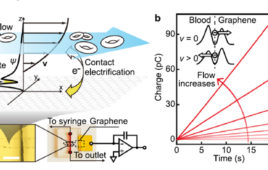 Graphene has been grown from materials as diverse as plastic, cockroaches, Girl Scout cookies, and dog feces, and can theoretically be grown from any carbon source. However, scientists are still looking for a graphene precursor and growth method that is sustainable, scalable, and economically feasible, since these are all requirements for realizing widespread commercialization of graphene-based devices.
Graphene has been grown from materials as diverse as plastic, cockroaches, Girl Scout cookies, and dog feces, and can theoretically be grown from any carbon source. However, scientists are still looking for a graphene precursor and growth method that is sustainable, scalable, and economically feasible, since these are all requirements for realizing widespread commercialization of graphene-based devices.
In a new study, researchers have grown graphene from the tea tree plant Melaleuca alternifolia, the same plant used to make essential oils in traditional medicine. The researchers demonstrated that they could fabricate large-area, nearly defect-free graphene films from tea tree oil in as little as a few seconds to a few minutes, whereas current growth methods usually take several hours. Unlike current methods, the new method also works at relatively low temperatures, does not require catalysts, and does not rely on methane or other nonrenewable, toxic, or explosive precursors.
Read more at phys.org.
Release Date: August 21, 2015




